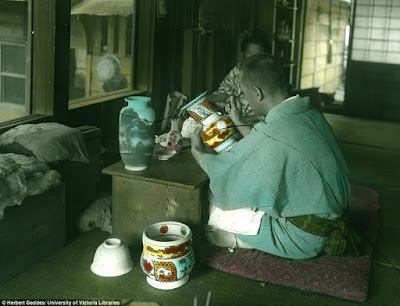This map of Galway City from 1651 shows the walled city (North is to the left). The River Corrib is in the foreground, crossed by what is now "O' Briens Bridge" leading to Salthill
One of the first activities of the newly-formed Galway Archaeological and Historical Society, founded in 1900, was to oversee the creation of a copy of the Pictorial Map of Galway. This is an indication of the significance of the map to those interested in the archaeological and historical heritage of the city over 100 years ago.
Two known copies of the original map exist, one in the Library of Trinity College, Dublin, on which the early twentieth century copy is based, and the second in the archives of the Hardiman Library at NUI, Galway. This new digitised version of the map is based on the Hardiman Library copy. The map is a bird's eye view of a town surrounded on three sides by water, the River Corrib in the foreground, its tributaries, and the sea. The further distance is foreshortened and here powerful bastioned ramparts block the eastern or landward approaches via the Bóthar Mór [Bohermore] or Bóthar Beag [College Road] and overlook a tilting green [Eyre Square].Streets and hd houses within the walls are depicted with painstaking accuracy which has been confirmed, for instance, by archaeological investigation of Blake's Castle on Quay St. in 1978-88.
The map is often assumed to have been drawn in connection with last-ditch negotiations to secure military assistance from Charles, Duke of Lorraine in 1651. The Irish royalists quarrelled amongst themselves trading accusations of disloyalty and bad faith and negotiations broke down but it seems that Galway was offered as a security against Lorraine's expenditure. This is the version which James Hardiman offers in his History of Galway published in 1820. However, modern scholars suggest that the Pictorial Map's history may be a little more complicated than Hardiman's version suggests. John Towler points out in a recent Ph.D dissertation that the map may have been drawn after Charles II's restoration in 1660 and sponsored by the town's pre-war municipal elite (the family crests of the 'tribes' are on the margins) as part of a campaign to regain their property.
Archaeologist Paul Walsh, in his detailed study of the topography of medieval and early modern Galway, notes that the map depicts features which had already disappeared by 1651 and contends that it is intended as a historical perspective of the city. It is also possible that the final published version of the map was based on an earlier version drawn at the time of the negotiations in the early 1650s. Dr. Padraig Lenihan, lecturer in History at NUI, Galway, notes that 'it is the most accurate and, indeed, most beautiful map of an Irish urban space before John Roque.s 1756 map of Georgian Dublin.'.
St Nicholas Church from the 14th century
14 STREETS OF GALWAY
The early town of Galway was laid out inside the city walls, which were erected by the de Burgo family in order to protect the town. Although almost all of the original city wall is now gone (only a small portion remains in the present Eyre Square Centre), the original streets, dating from the 1270s, can still be found, and many retain their original names. It is interesting to note that along with the 14 Tribes of Galway, there were 14 streets in the original town. These first Galway streets are clearly depicted in the famous 1651 map of Galway, and if you were to compare this map with a modern day one, you will see that the layout of the original streets has changed very little. So when people complain that the streets of Galway’s city centre are very narrow, you can tell them that this is because they date from medieval times, when there were no cars or trucks trying to drive through the town centre!
The 14 streets shown on the 1651 map were:
1. Kea Street (now Quay Street.)
2. Crosse Street (now Cross Street),
3. Gaol Street (now High Street/Mainguard Street).
4. High Middle Street is (now Shop Street,
5. Great Gate Street (now Williams Street)
6. Little Gate Street (now Upper Abbeygate Street)
7. Skinner’s Street (now Lower Abbeygate Street)
8. Bridge Gate Street (now Bridge Street)
9. North Street (now Market Street)
10. Street Between Two Lanes (now Middle Street)
11. New Tower Street, later Back Street (now St. Augustine Street)
12. Lombard Street
13. Pludd Street (now Whitehall)
14. Earl Street
We are very fortunate in having practically all of the medieval lay-out of the original town of Galway still intact, as it gives us some idea of what early Galway would have looked like, with its narrow streets and tall, cut-stone buildings. It is this medieval atmosphere which makes Galway unique, and which is why so many visitors like to visit our city. Our historic streetscapes are what make our city so special, so it is in all our interests to value and protect them for future generations.
Galway map today









































